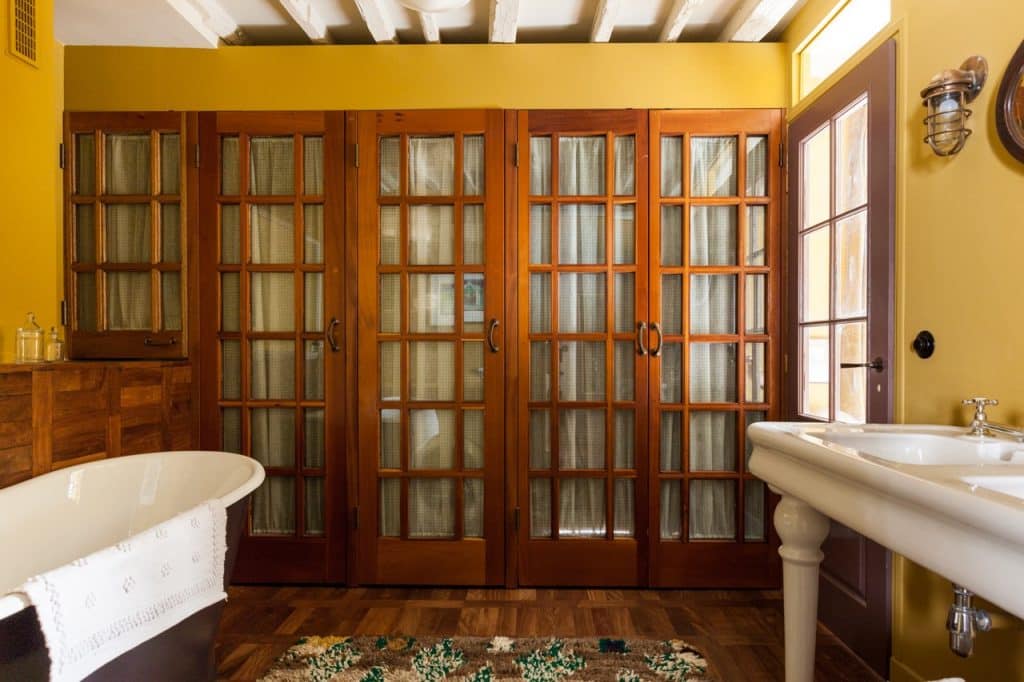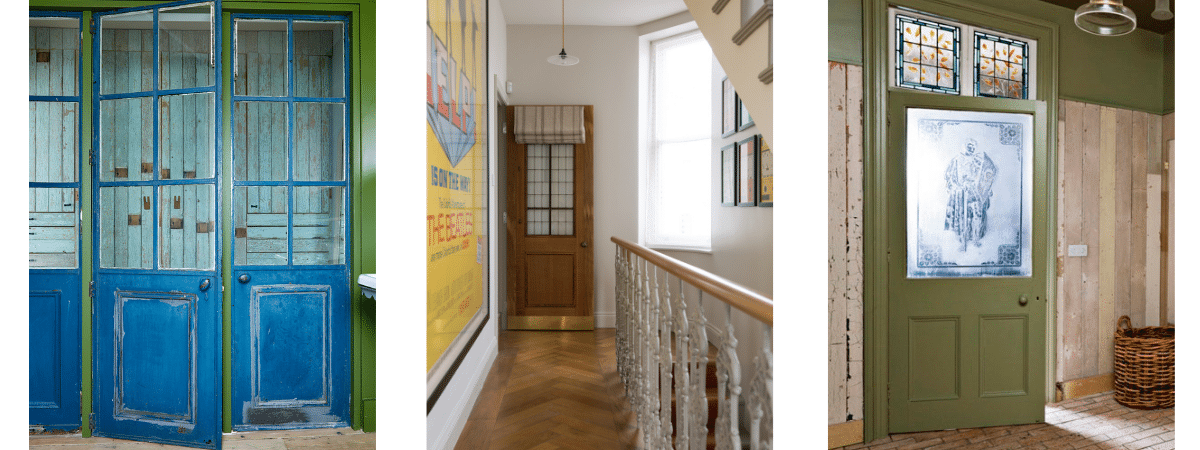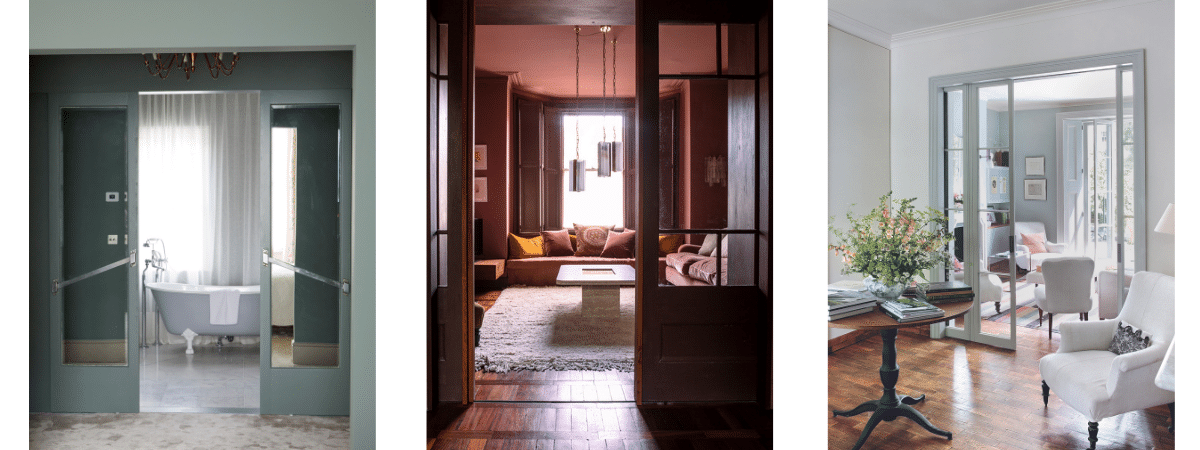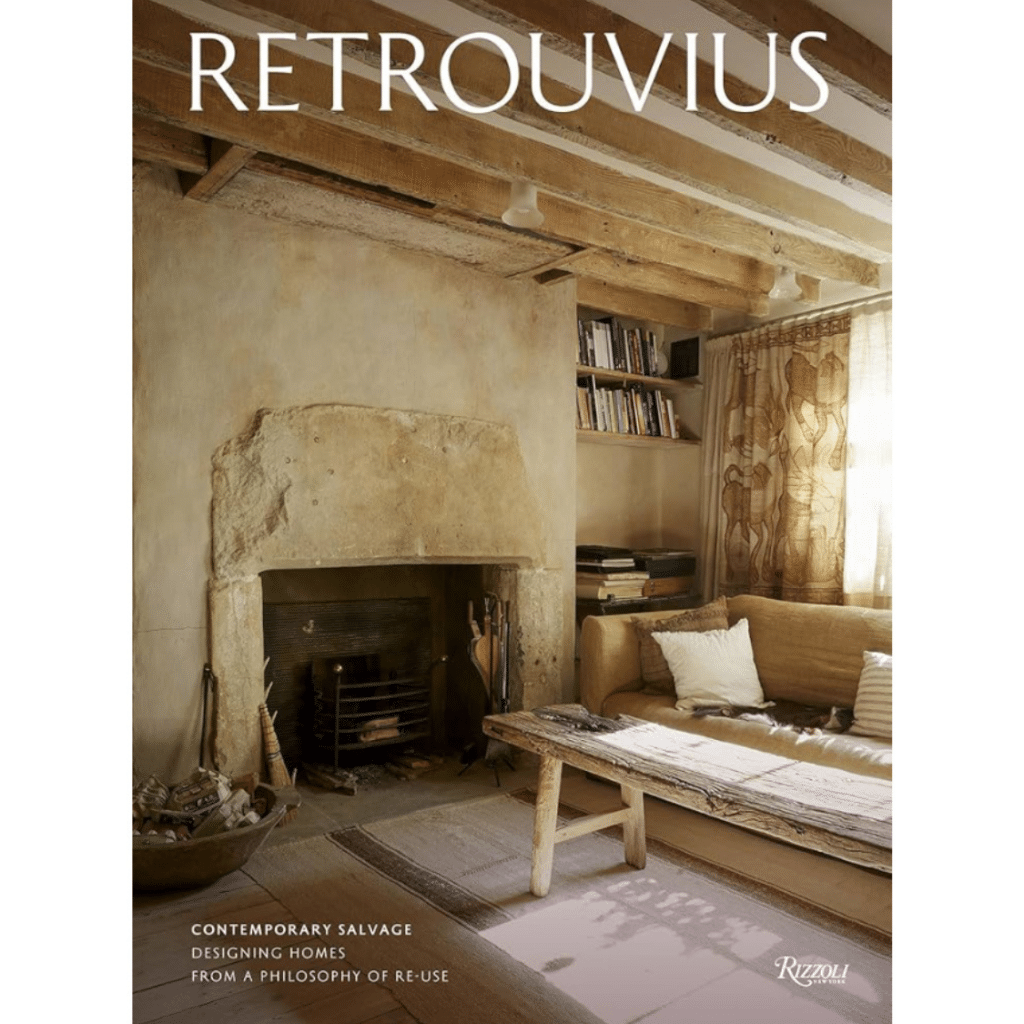
Utilising reclaimed doors can present challenges, but at Retrouvius, we firmly believe that the character, quality, and craftsmanship they infuse into a space make the endeavor truly worthwhile. To help demystify the process, our professional designers have compiled this user-friendly guide.
Key Considerations:
Working with salvaged doors becomes less daunting once you grasp the fundamental approaches. Here are some essential considerations to keep in mind:
1. Consider Engaging A Builder/Joiner:
Unless luck grants you a perfectly sized door, involving a skilled builder or joiner is recommended. Collaborate with them during the design phase, and if possible, invite them on a buying expedition. Feel free to visit our London showroom to explore your options.
2. Compliance with Safety Standards:
Involving a professional is vital to ensure your internal doors meet fire regulations. Salvaged doors often fall short of safety standards, limiting their use in specific areas.
3. The Significance of Wood Type
The wood used that your reclaimed door is made of matters. Softwood is more prone to movement, while hardwood offers greater stability. Choose softwoods like pine for areas with minimal natural movement, and opt for hardwoods in modern heated environments.
Reviving Existing Doors
Consider ways to rejuvenate or enliven what already exists in your building. Some ideas include painting, cladding or sanding back a painted door to see what’s beneath (feast your eyes on the marbled delight below!). Adding an insert into a solid door also works well (Browse our salvaged copperlight or leaded windows here).

Elegant Sliding Solutions
Enjoy a visual connection between spaces and the flexibility to create sound barriers in an open plan space, whilst also minimising the space taken up by the door’s swing.
By mounting your door on a top-hung sliding track you can work with a door that is a little bigger than your aperture. Consider using a pelmet to hide the track and make it look sleek.

Smaller Door Than Aperture
Here you have two options. One is to adapt the size of the aperture, the other is to increase the size of the door. Consider being creative with materials – such as by using a contrasting timber.

Larger Door Than Aperture
Though we recommend trying to find a door as close to your required size as possible, you also have two options if your door is too big.
The first is to reduce the size of your door. Solid hardwood is more suitable for cutting than softer wood such as pine. You will also need to consider the overall proportions of the door and make sure that your reductions don’t unbalance the aesthetic!
Alternatively, you can create an aperture to fit your door (s). This offers a chance to play with scale – such as by using multiple doors in unison or using an extra-tall door. Doors that stretch floor to ceiling give a lovely sense of grandeur!

Pocket Doors
Here the door slides into a recess within the wall – A trickier approach but ideal if you have a limited space for a hinged door to swing out into.
This is definitely a job for the professionals. Our top tip is to make sure that the internal side of the pocket is nicely finished as you will see it when the door sits open!

Using a Reclaimed Front Door
In this instance it’s especially important to buy a door as close to the correct dimensions as possible – though minor alterations can be made for a snug fit. We have a selection of appropriate doors available and we’ll be delighted to assist in helping you find the perfect match (mail@Retrouvius.com).
In Conclusion…
Incorporating reclaimed doors into your space demands some careful consideration, but the allure of craftsmanship and uniqueness they bring is incomparable. With this guide in hand, you’re well-equipped to embark on a transformative journey that merges the past with the present in your project.



